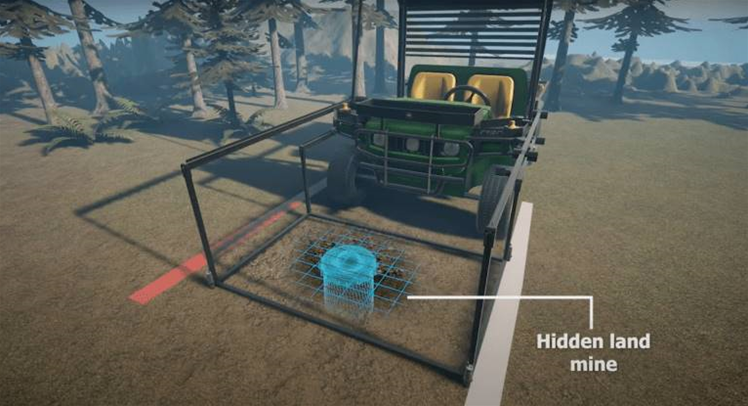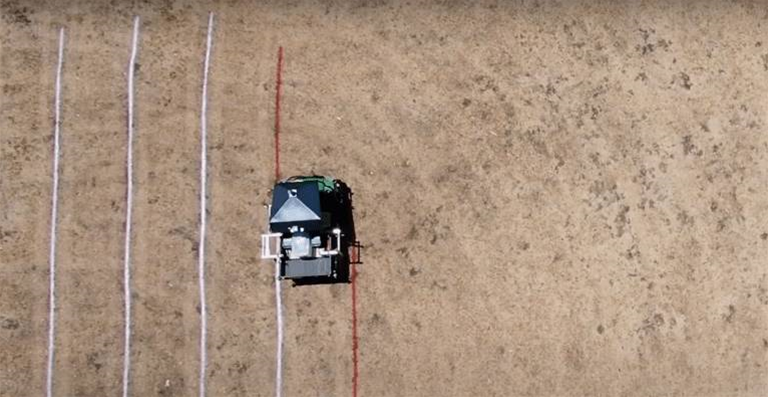The CSIRO’s Data61 is developing fully autonomous robots to tackle the dangerous, if dull, task of finding and deactivating landmines left over from conflicts.

Demining is currently a painstaking manual process that kills or injures over 100 deminers a year that involves using a metal detector, stick or brush to find and expose the buried landmine before it can be removed by hand and the firing mechanism detached.
That means it meets the three criteria of dirty, dull and dangerous work that make it an ideal task for robotic intervention, according to Dr Paul Cronin from Data61’s project partner Molten-Labs.
“The aim of this project is to develop an autonomous demining robot, or more accurately, a swarm of autonomous demining robots that work together to quickly, safely, and inexpensively remove explosive mines in humanitarian crisis zones.”
The project is currently in early stages of development, with the team just completed the first of five phases, refining a proprietary navigation system built by Data61 that specialises in rough terrain.
Part of the system involves spraying red and white lane markings on the ground as the robot traverses the minefield, serving the dual purpose of showing which land has already been cleared and providing more precise guidance for the robot than would be possible with GPS.

Further stages of development involve developing the robot’s ability to find the metal components of mines and distinguish them from pieces of metallic trash using two different metal detector arrays.
The first will be a wide-area detector fixed on the front of the robot that can quickly cover large swathes of land and locate landmines before the robot has run over them and potentially destroyed expensive equipment.
Next, an articulated robotic arm will extend with a more precise metal detector to examine the area and pinpoint the landmine before destroying it with an oxy-acetylene torch that burns through the explosives in the mine without detonating it - a process known as deflagration.
“These demining robots will be able to enter the minefield immediately, without the need to train local operators,” Cronin said.
“By using a swarm of these machines that are supported by a small core team of highly qualified personnel, clearance work can begin almost immediately upon arrival.
“Our system is inherently safer than current demining, as the robotic vehicles do not require deminers to be in the minefield. Instead, the technical support team will be 100 metres away from the nearest operating robot.”
Data61 said there have been 122,000 landmine casualties since global tracking began in 1999, with 25 percent occurring between 2015 to 2018 and a substantial percentage children.



.png&h=140&w=231&c=1&s=0)
_(20).jpg&h=140&w=231&c=1&s=0)




_(26).jpg&w=100&c=1&s=0)

 iTnews Executive Retreat - Security Leaders Edition
iTnews Executive Retreat - Security Leaders Edition












_(1).jpg&h=140&w=231&c=1&s=0)



